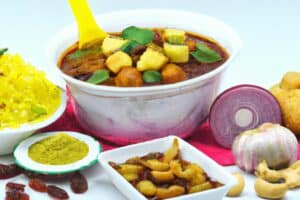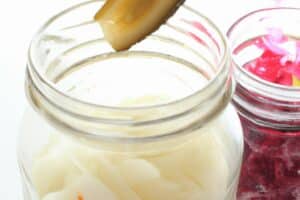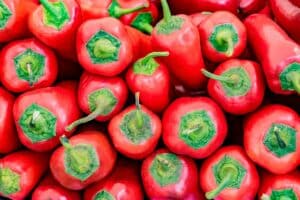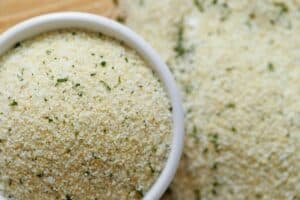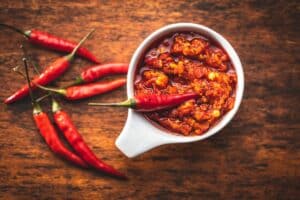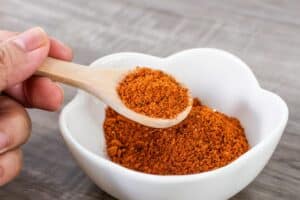Pickling spice is a seasoning blend commonly used to flavor pickled items. It has a sweet/spicy flavor and stands up well to the pickling process without losing strength or going bad. As well as pickling, you can also use pickling spice to season certain dishes.
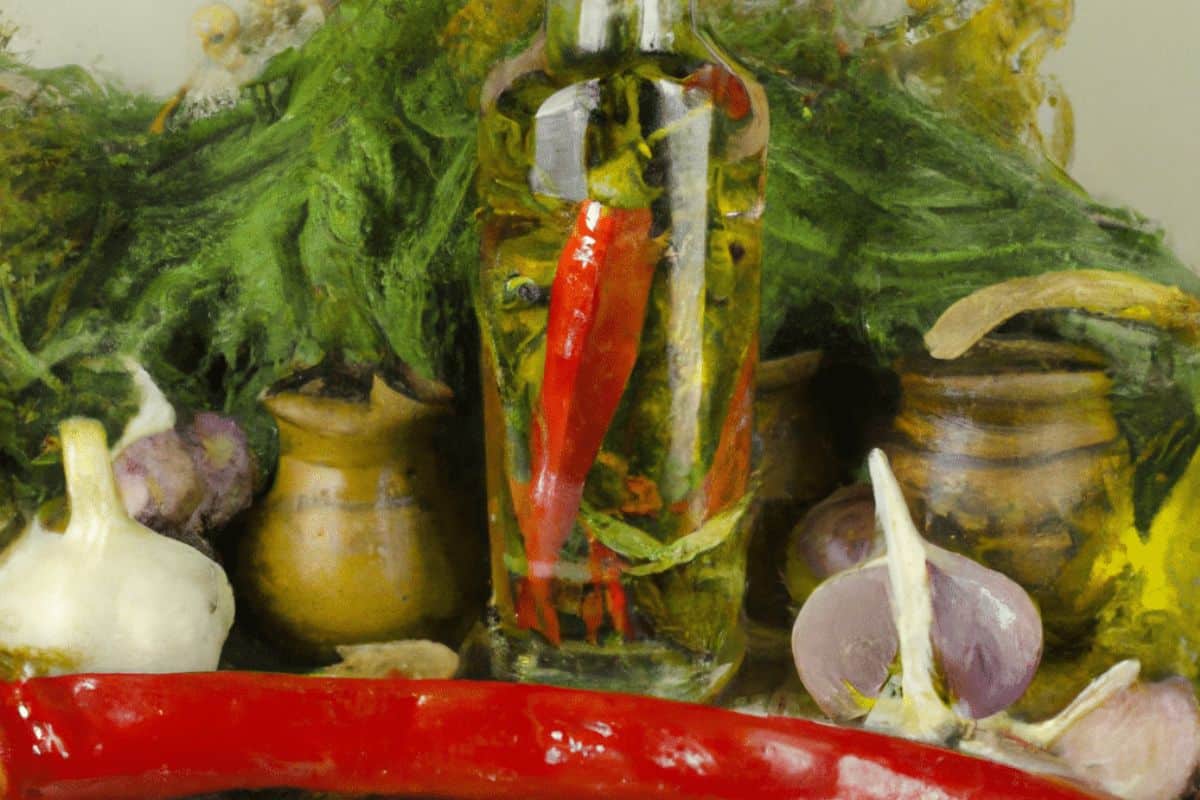
If you run out of pickling spice, don’t have time to make your own, or can’t find it in the grocery store, your best alternatives are coriander seeds, whole black peppercorns, red pepper flakes, allspice, and mustard seeds.
Pickling Spice Substitute Comparison
| 1 cup | Calories | Fat | Carb | Protein | Fiber | Ratio |
| Pickling Spice | 5 | 0g | 1g | 0g | 1:1 | |
| Coriander Seeds | 15 | 0.9g | 2.8g | 0.6g | 1:2 | |
| Black Peppercorns | 0 | 0g | 0g | 0g | 1:2 | |
| Red Pepper Flakes | 0 | 0g | 0g | 0g | 1:3 | |
| Allspice | 16 | 0.5g | 4.3g | 0.4g | 1:1 | |
| Mustard Seeds | 20 | 2.5g | 0g | 0g | 1:1 |
What Does Pickling Spice Taste Like?
Pickling spice has a sweet and spicy flavor. The easiest thing to compare the taste to is a pickle because pickling spice is the main flavoring ingredient in pickled goods.
Its flavor comes from the spices included in the mix: allspice, bay leaves, cardamom, cinnamon, cloves, coriander, ginger, mustard seeds, and peppercorns.
Pickling Spice Nutritional Value
Pickling spice has no nutritional value, as it is a seasoning. It does not have a high caloric value or a high percentage of protein, carbs, or fat.
One tablespoon of pickling spice contains the following:
| Calories | Fat | Carb | Protein |
| 5 | 0g | 1g | 0g |
Pickling Spice Substitutes
The easiest things to substitute for pickling spice are pickling spice ingredients. These include allspice, bay leaves, cardamom, coriander, mustard seeds, black peppercorns, red pepper flakes, and sometimes, dill.
If you have some of these spices in your house, you could easily make pickling spice by combining them in your desired ratios.
Start small and add a little of each ingredient at a time, sampling the mix until you get a flavor you like.
When choosing a pickling spice substitute, use whole spices rather than ground spices. Whole spices hold up better in the pickling brine and impart a strong flavor without making the brine cloudy.
1. Allspice
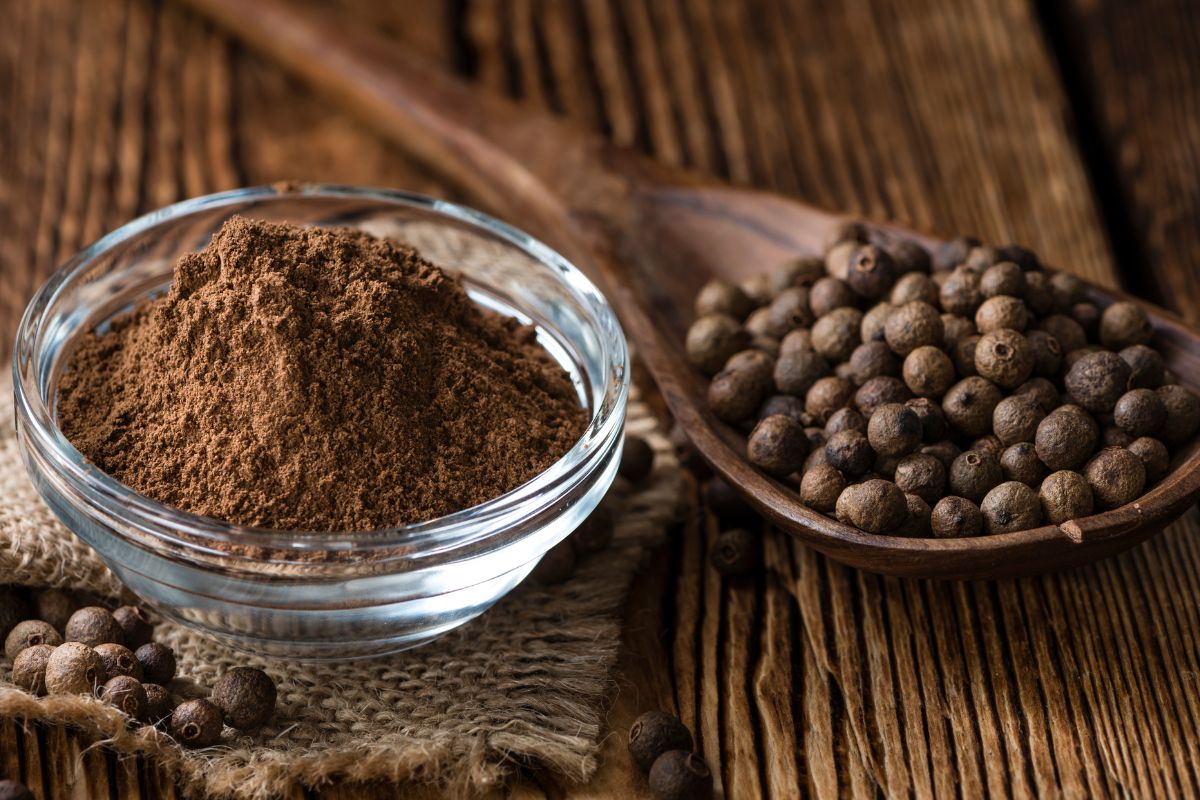
Often mistaken for a blend of spices, allspice is a single spice derived from the pimento. It has a unique flavor profile and is not, as some people believe, a blend of cinnamon, pepper, cloves, and cardamom.
Although it doesn’t have the same flavor profile as pickling spice, allspice is similar enough to be used as a direct substitute at a 1:1 ratio. It is the best substitute for pickling spice if you are in a pinch and have nothing else.
2. Mustard Seeds
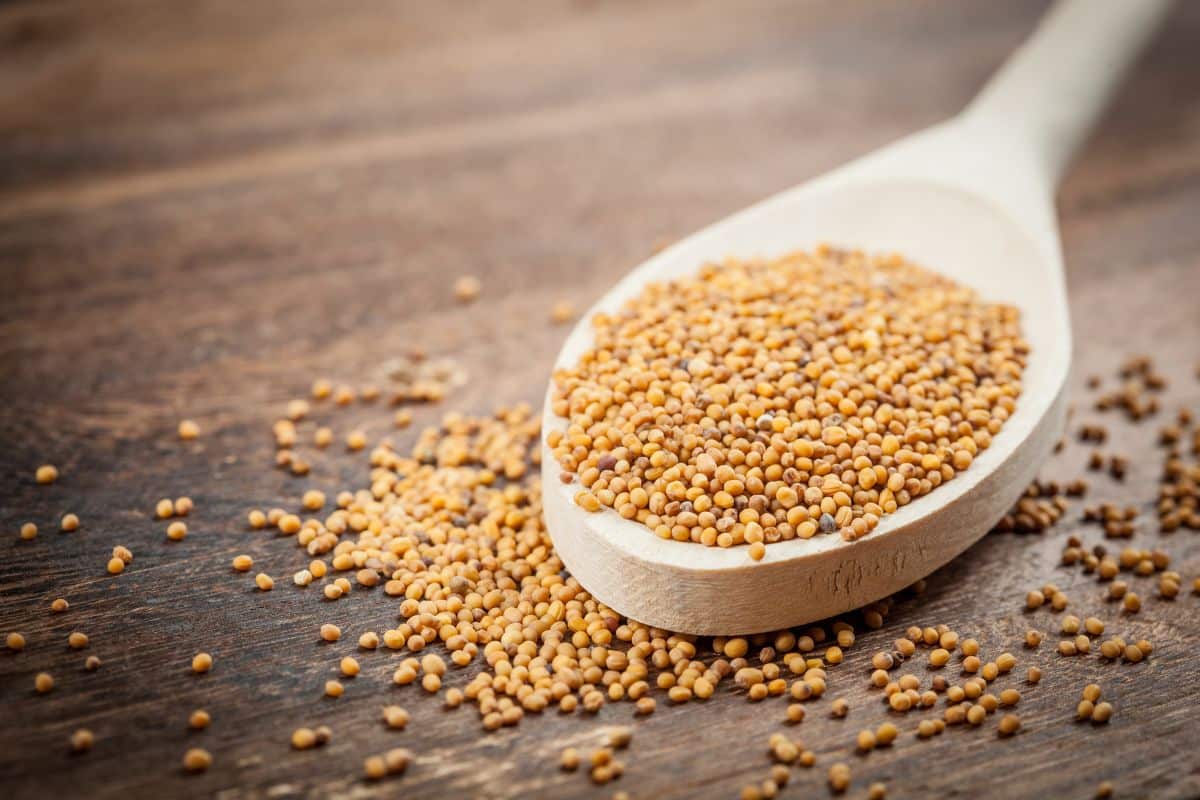
Mustard seeds impart a bold, herbal, spicy flavor to a pickling brine and make a good direct substitute for pickling spice because they are hardy and hold up well to the pickling process.
Just be aware that ground or bottled mustard is not a substitute for pickling spice. These ingredients may impart cloudiness, odd flavor, and a generally unpleasant texture to the brine.
Mustard seeds make a nice substitute for pickling spice because they add a lot of bold flavor without making the mix too spicy.
3. Coriander Seeds
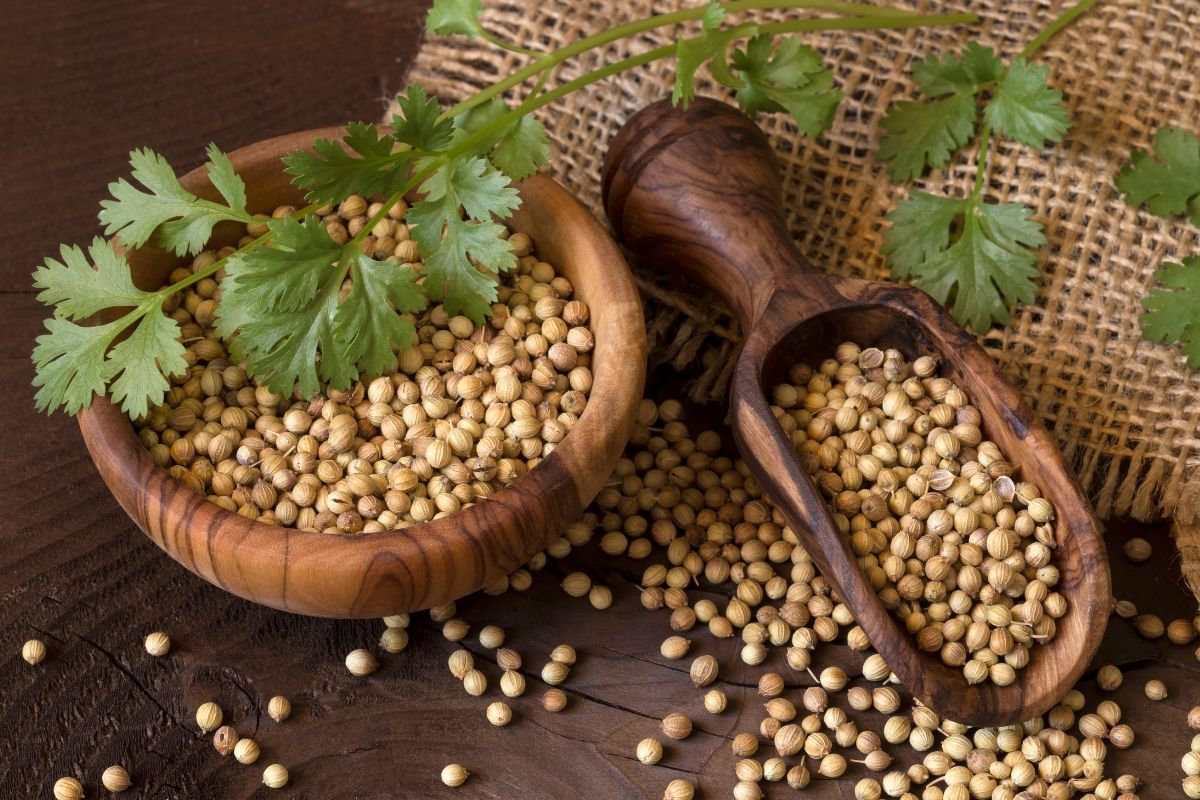
Coriander seeds impart a strong, floral, herbal flavor to a pickling brine. When using coriander seeds instead of pickling spice, make sure not to overdo it, or your brine could come out too woody or herbal.
When substituting coriander seeds for pickling spice without other ingredients, use about half the amount of coriander seeds to pickling spice to balance the flavor.
4. Black Peppercorns
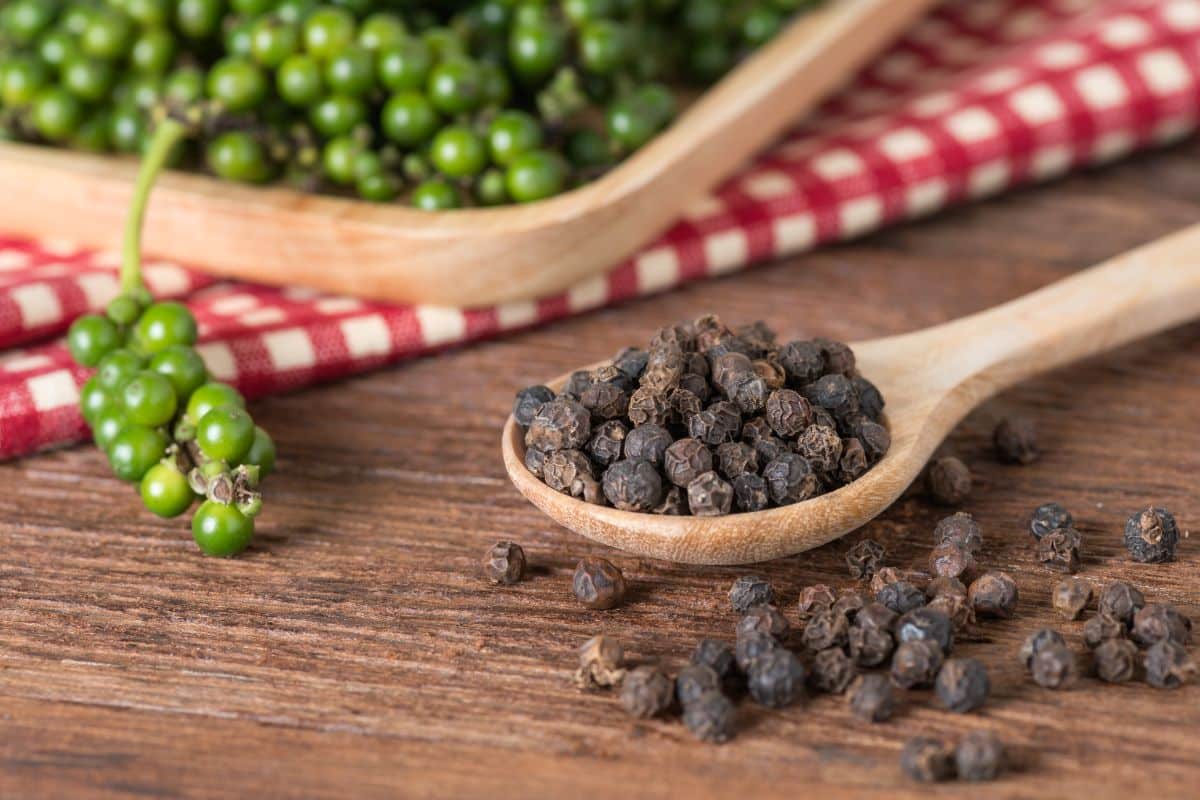
Black peppercorns have a bitter, spicy taste and should be used in place of pickling brine carefully to avoid making the mix too spicy or bitter.
Use about half the amount of black peppercorns, and always use whole peppercorns, not crushed or ground.
5. Red Pepper Flakes
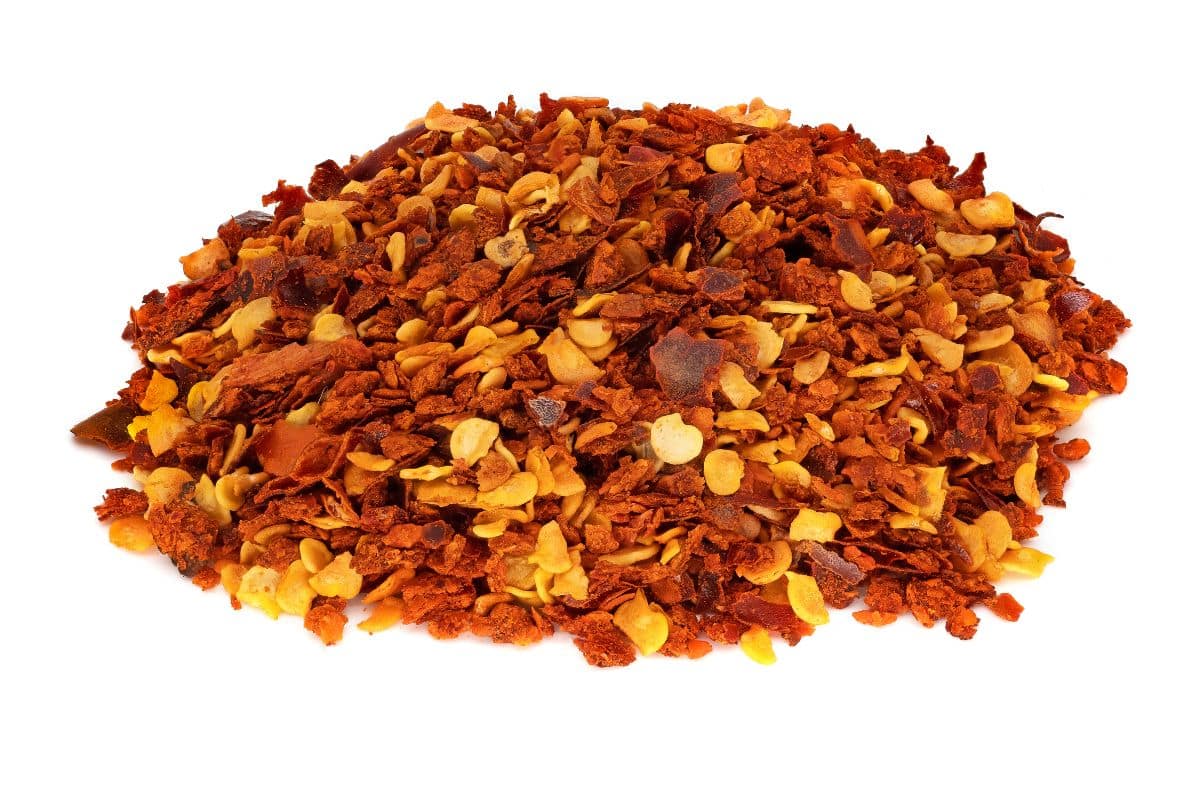
Red pepper flakes are even spicier than black peppercorns and can quickly overwhelm a pickling brine if you add them too heavily.
When directly substituting red pepper flakes for pickling spice, use about one-quarter the amount of red pepper flakes.
Add red pepper flakes to taste if you like your pickles a little spicy. Just be aware that if you only use red pepper flakes in your brine, you will not get the same complex flavor that you would normally get from pickling spice.
Popular Recipes That Call For Pickling Spice
The most popular recipes that call for pickling spice are pickled fruits and vegetables: pickled cucumbers, onions, carrots, and green beans.
You can also use pickling spice in sauerkraut and kimchi. Other recipes that taste wonderful when you add pickling spice are stews, braised meats, beans, and rice dishes.
1. Pickled Cucumbers
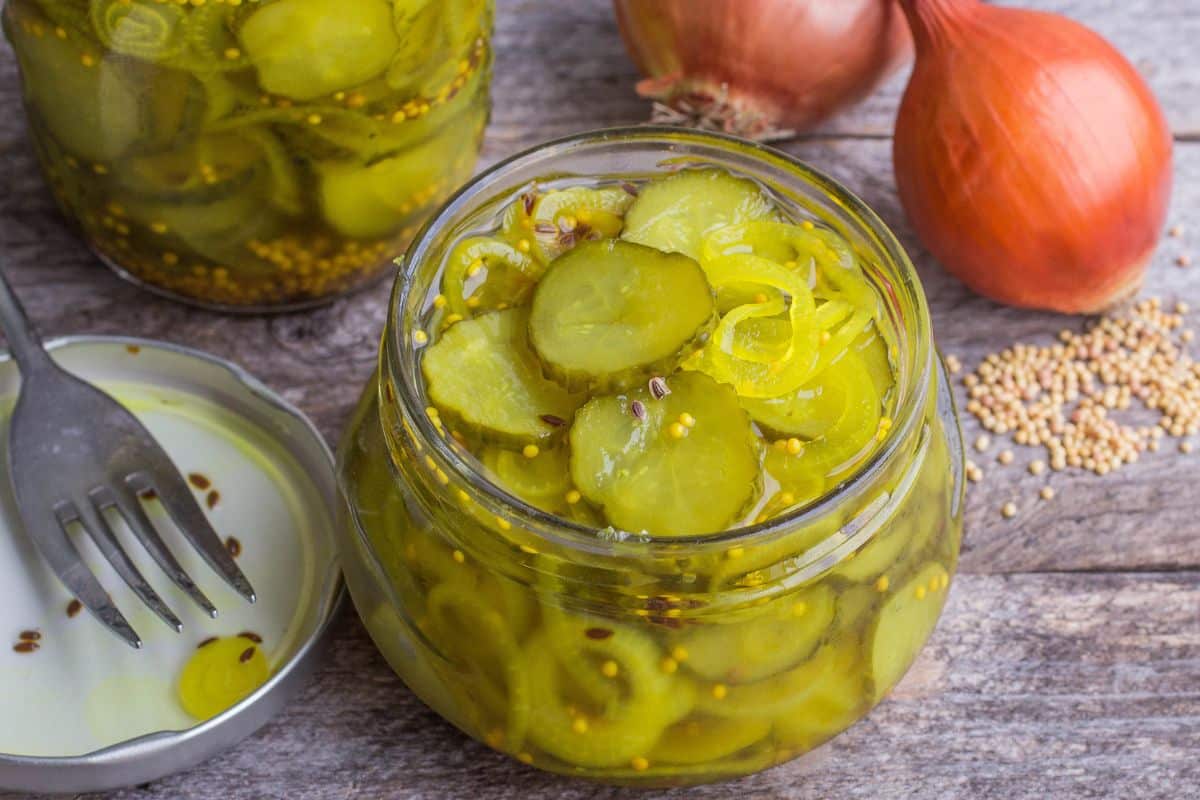
Pickled cucumbers are a delicious, healthy snack you can enjoy all year. They are so easy to make and keep forever in the fridge.
We like to have a batch going all the time. The best part is, the longer they sit in the brine, the tastier they get!
To make pickled cucumbers, cut up cucumbers and put them in a sealed mason jar with a saltwater mix. Season the brine with pickling spice.
If the cucumbers have very large, watery seeds, you may want to remove those first.
2. Sauerkraut

Sauerkraut is a fermented salad made by salting cabbage to draw out moisture.
This process creates a brining solution that the cabbage sits into to ferment. The longer the cabbage sits, the more fermented it gets.
You can add any spices you like to sauerkraut, but popular choices include pickling spice, dill, and chili.
You can make your sauerkraut seasoning by experimenting with herbs and spices from your kitchen. The sky’s the limit!
3. Kimchi
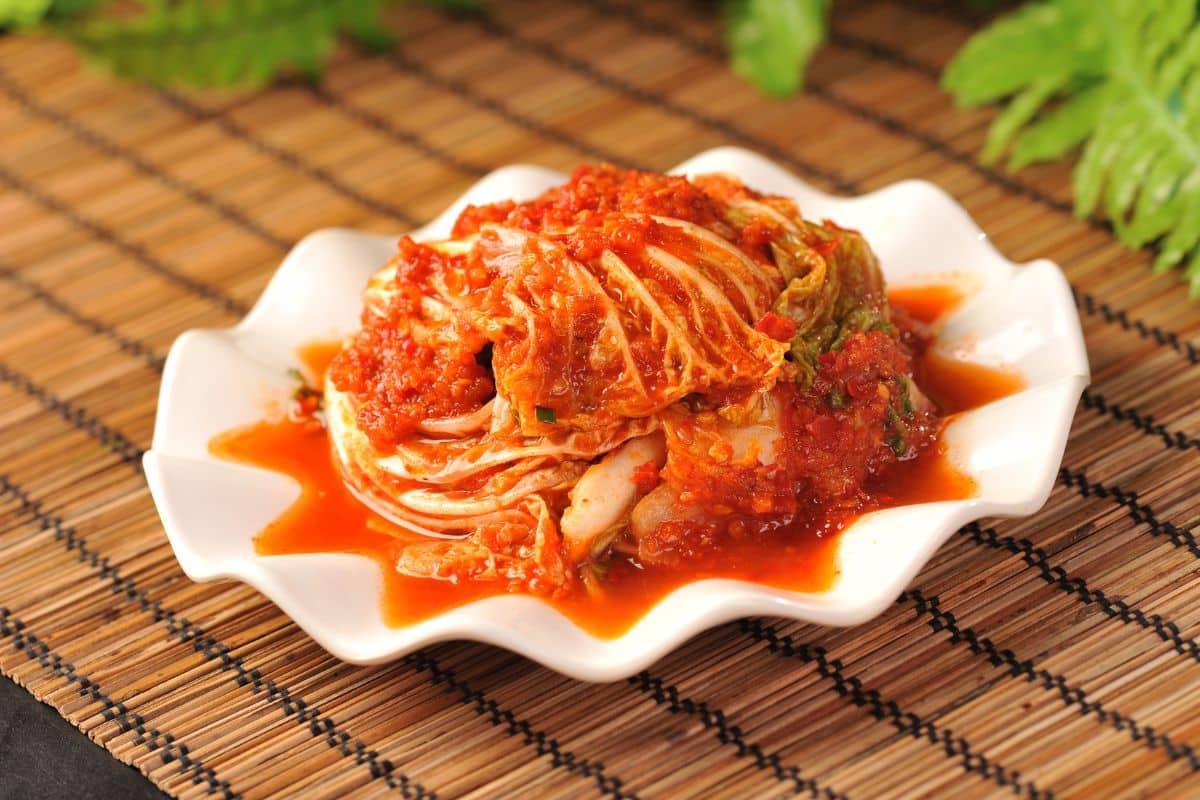
Kimchi is similar to sauerkraut. You make it by salting cabbage to create a brine, then fermenting the cabbage in the brine.
The cabbage is usually fermented at room temperature for two to three days, then put into the fridge to slow the fermentation process.
The main difference between kimchi and sauerkraut is that kimchi uses napa or Chinese cabbage and includes a slightly different spice mixture.
You can make kimchi with pickling spice, gochujang, fish sauce, radishes, green onions, and carrots.
4. Braised Meat
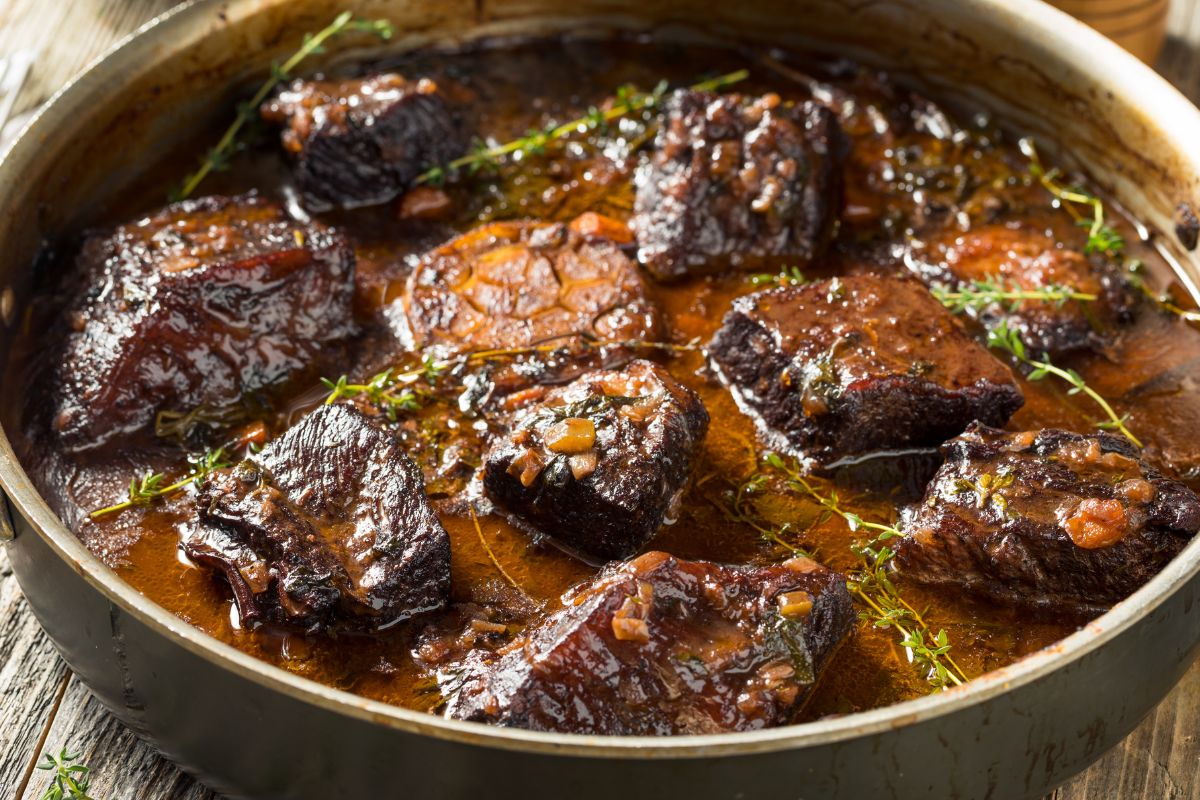
Adding pickling spice to braised meat imparts a sweet, spicy kick to the final dish. Heat the pickling spice with oil and onion in a pan before you start and set aside.
After you dice and fry the beef, add the pickling spice mixture to the dish and cook until the meat is soft and tender.
5. Stew
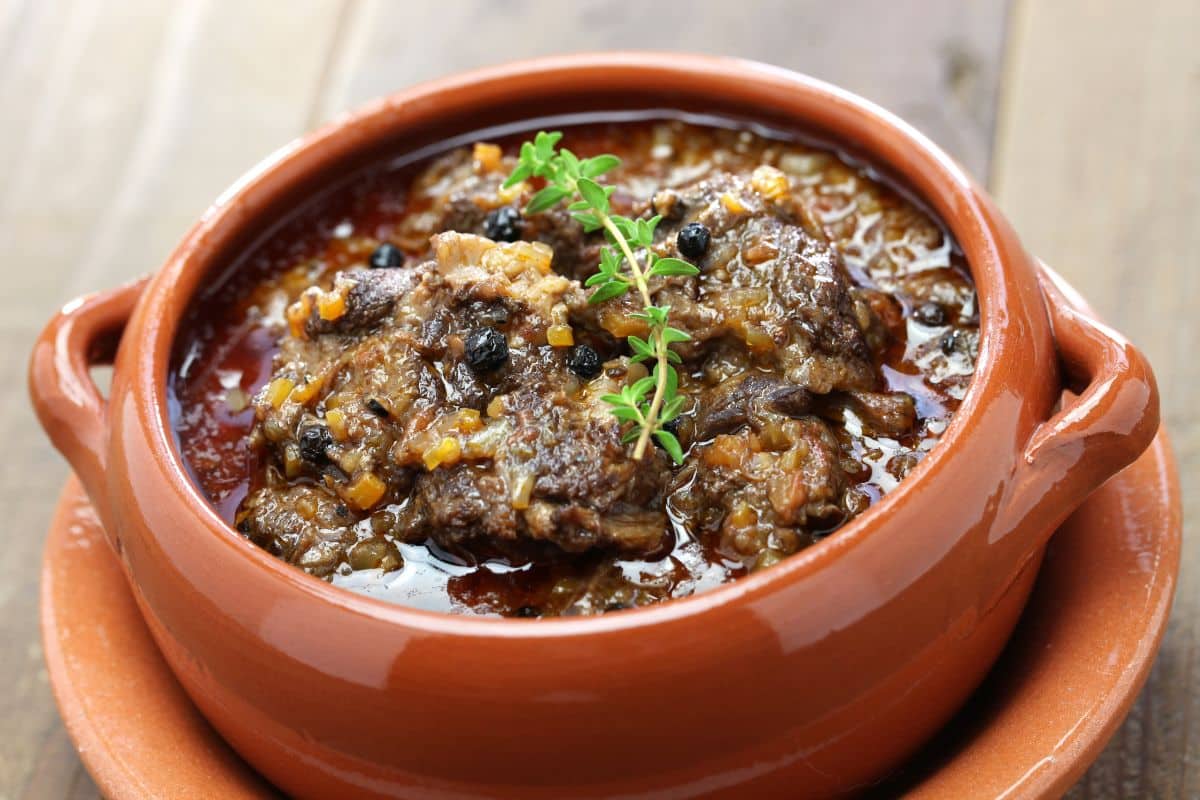
Pickling spice can be added to any step of the stew-making process—even sprinkled on top after serving.
For best results, add the pickling spice to the mix at the beginning so the flavors have a chance to mingle with the other ingredients during the long, slow cooking process.
6. Beans
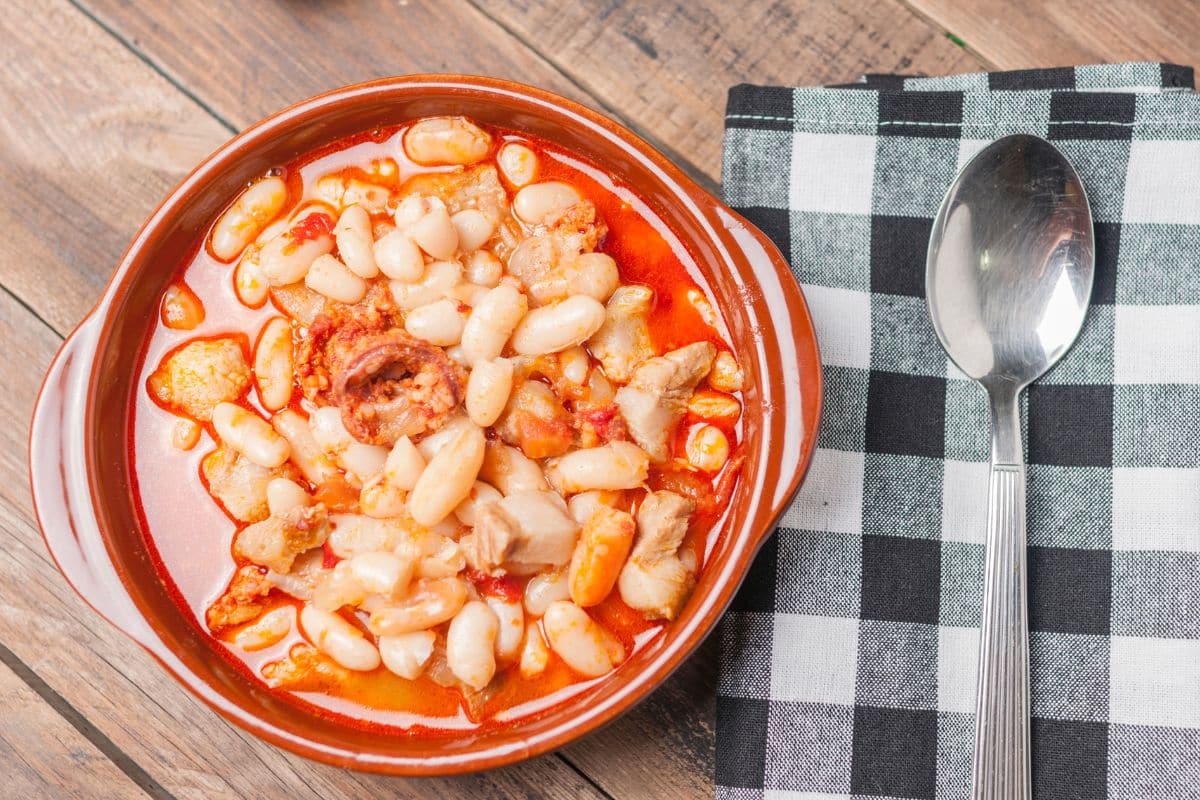
As with stew, you’ll find that your best results are achieved when adding pickling spice to beans early in the process.
If you soak your beans in water, you can add pickling spice to the water while they soak. If you use canned beans, add pickling spice when you start cooking them to allow maximum time for the flavors to impart.
7. Rice
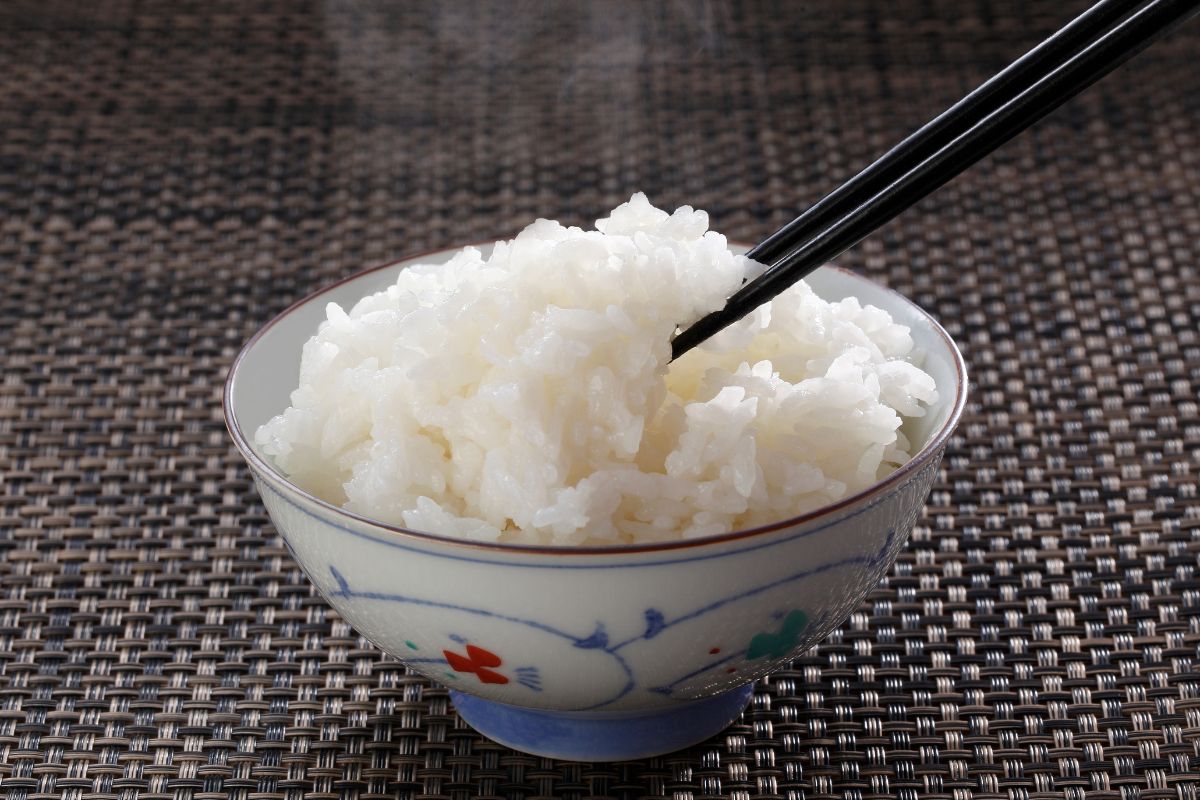
Add pickling spice to your water before boiling it to impart a sweet, spicy, funkiness to your rice dishes.
Alternatively, pickling spice can be stirred into the rice after it cooks, or sprinkled on top at the end before serving.
Some rice dishes that are greatly improved with the addition of pickling spice include paella, risotto, and jambalaya.
Pickling spice can also be mixed into sushi rice for an extra special kick. Just be sure that the pickling spice flavors are well-balanced with the fish featured in the sushi.
Conclusion
Pickling spice makes a great addition to any pantry, and it’s easy to make at home on your own.
However, if you’re not able to find all the ingredients, you can substitute allspice, mustard seeds, coriander seeds, black peppercorns, or red pepper flakes for pickling spice.
When substituting single spices for pickling spice, keep in mind that you will not get the same complex flavor profile as true pickling spice.
Be aware also that some of the spices, like black peppercorns and red pepper flakes, can make your brine very spicy.
Frequently Asked Questions
Below are some of the most frequently asked questions about the best substitutes for pickling spice.
Pickling spice is a combination of spices used in the pickling process. It typically contains bay leaves, whole black peppercorns, coriander seeds, mustard seeds, red pepper flakes, allspice, cardamom, ginger, and clove.
If you’re out of pickling spice and need to make a substitution, the best thing to choose is either allspice or mustard seeds.
These both impart a rich, hearty flavor to the brine without adding too much spice or sweetness.
The three primary ingredients in pickling are water, salt, and some kind of vegetable.
In addition to those, you can add any amount of spice or seasoning that you like. You can also pickle things that aren’t vegetables, like fish, eggs, peaches, and pears.


